Veneers in Vilnius
Search and Compare the Best Clinics and Doctors at the Lowest Prices for Veneers in Vilnius
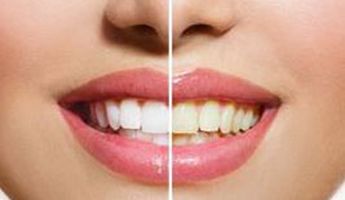
Find the best clinics for Veneers in Vilnius
With Medijump you can browse 1 facilities offering Veneers procedures in Vilnius. The cheapest price available is $408 in Vilnius. And for the cheapest price globally, prices start from in .
Veneers in Lithuania
Price: $ 408
Veneers in Vilnius
Price: $ 408
MedLT, located in Laisves, Vilnius, Lithuania offers patients Veneers procedures among its total of 74 available procedures, across 10 different specialties. The cost of a Veneers procedure starts from £320, whilst the national average price is approximately £320. All procedures and treatments are undertaken by the lead specialist at the Hospital, and they are not accredited by any recognized accreditations institutes
Compare Before & After Photos of _procedure_photos.phpVeneers
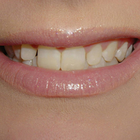
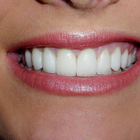
Front view
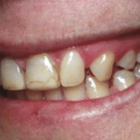
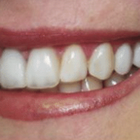
Half-side view
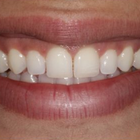
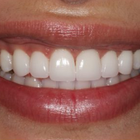
Front view
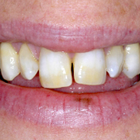
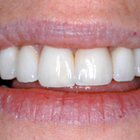
Front view
WHY US?
At Medijump, we're making medical easy. You can search, compare, discuss, and book your medical all in one place. We open the door to the best medical providers worldwide, saving you time and energy along the way, and it's all for FREE, no hidden fees, and no price markups guaranteed. So what are you waiting for?

Free

Best Price

Widest Selection

Risk-Free
What you need to know about Veneers in Vilnius

Dental veneers are thin covers that are attached to the surface of teeth to enhance their appearance. The non-invasive dentral procedure is previously popular among those with damaged or discolored teeth. Nowadays, however, the procedure is seen as the ideal method of achieving the ‘perfect smile.'
Veneers can be used to hide uneven, misaligned or simply imperfect teeth. The veneers are cemented over the existing teeth and fixed into place – there are two main types of veneer; Porcelain and Composite. Porcelain veneers are more expensive and appear more natural, being made in a laboratory so require multiple visits. There is often the need to alter the existing teeth, removing some of the mass. Composite veneers are made of the same materials used for cavity fillings. They can usually be made quickly, and are sculpted directly on the teeth instead of in a laboratory. Thus allowing the procedure to be done in a day.
What does a Veneers Procedure Involve?
Veneers are used primarily for aesthetics. This type of treatment procedure is perfect for people who have gaps in their teeth, stains, as well as people who may have chipped a tooth. Veneers are custom-made shells designed to fit the shape of your teeth and to be attached to your front teeth to improve the size, shape, color, and length.
Two main types of veneers are:
- Composite Veneer - this type can be created by your dentist on the same day and directly applied to your teeth. You will only need a single appointment to complete the procedure.
- Porcelain Veneer - this type is manufactured in a laboratory. Opting for a porcelain veneer will require you to have two appointments. First, is to prepare your teeth (enamel removal) and mold a model of your teeth to be created in the lab. The second is to finally cement your veneers onto your teeth.
The most commonly used type of Veneer is the Porcelain Veneer as it appears more natural and can resist stains better than composite veneers. Besides the two main types of veneers, some dentists may also offer no-prep veneers. These may include specific brands of procelain veneers like Vivaneers and Lumineers. They are less invasive to apply since the layers of tooth under the enamel aren't removed.
In terms of anesthetics, local anesthesia is not usually required while undergoing the whole procedure. However, depending on how you handle pain and discomfort, you may request to receive local anesthesia or sedation.
Aside from giving you a pleasing smile, veneers are resistant to staining and offer the best fix to broken or damaged teeth.
How Long Should I Stay in Vilnius for a Veneers Procedure?
This type of procedure is an outpatient treatment, meaning you may be able to go home after undergoing the procedure. However, you will be required to do a follow-up check-up with your dentist to assess the placement of your veneers and in most cases, the procedure has to be carried out over 2 separate occasions, just a day or two apart. Since this is a non-invasive treatment, stitches are not required, but you will be required to stay in Vilnius for at least a few days.
What's the Recovery Time for Veneers Procedures in Vilnius?
There is actually no recovery time after the placement of your veneers. You can also return back to your daily routines including exercise immediately after your trip. As for the enamel removal, you may experience some mild discomfort for about a week. It is best that you avoid very hot or cold foods, including hard, chewy or crunchy food. When your sensitivity wears off, you can return to your normal dietary habits.
What sort of Aftercare is Required for Veneers Procedures in Vilnius?
Once your dental veneers have been placed and you have completed the whole procedure, you should commit yourself to good oral hygiene, regular visits to your dentist and a good healthy lifestyle. Dental Veneers can last beyond 10 years now, however, just like your natural teeth, veneers are also still susceptible to damage. This is why aftercare is very important to help with the longevity of your new teeth.
What's the Success Rate of Veneers Procedures in Vilnius?
Over the past years, many studies have reported that over 91% of people who have had dental veneers experienced highly positive results. However, potential risks and side effects after undergoing this procedure are a possibility. Just like any other dental restoration, dental veneers can have some side-effects, for example:
- Tooth sensitivity - since this procedure will require the removal of some enamel, your teeth will become slightly sensitive, following the placement of your veneers.
- Response from gum tissues - your gum tissue might take some time to adjust to your newly placed veneers. Expect to have some minor inflammation and/or discomfort in your gums.
- Risk of trauma - once your teeth’s enamel is removed, it will become more sensitive, thus it will be even possible for the pulp within your teeth to die.
- Possible Issues with placement - it's possible for your teeth to have issues with decay or chipping along the outer portion of your veneers. Gum irritation may also be possible. Other problems may include rough-edged veneers and overhanging veneers.
- Overall Discomfort - experiencing some discomfort after the procedure is to be expected. If you are particularly sensitive, it is advisable that you take an over the counter medication to help you relax and treat your pain.
Are there Alternatives to Veneers Procedures in Vilnius?
You also have to be aware that this type of treatment option is not for everyone. If you are not a good candidate to undergo the procedure, note that there are still possible alternatives that will be suited for you. These alternatives may include:
Orthodontics - if you have severely crooked teeth or malocclusion, dental veneers are not for you. You may want to consider a more comprehensive orthodontic procedure to treat your case.
Dental crowns - these are quite similar to dental veneers. These are also custom-made to match the shape of your teeth. However, unlike veneers, a crown extends all the way around your tooth, meaning your dentist will remove a large portion of your dental structure. These crowns are perfect for patients who have considerable damage that affects the strength and structure of their teeth.
Bonding - often called composite veneers. This is typically for patients with an insufficient amount of tooth enamel.
Whilst the information presented here has been accurately sourced and verified by a medical professional for its accuracy, it is still advised to consult with your doctor before pursuing a medical treatment at one of the listed medical providers
No Time?
Tell us what you're looking for and we'll reachout to the top clinics all at once
Enquire Now

Popular Procedures in Vilnius
Prices Start From $1

Prices Start From $1

Prices Start From $48

Prices Start From $1

Prices Start From $1

Prices Start From $1

Prices Start From $11

Prices Start From $45

Recommended Medical Centers in Vilnius for Veneers

- Interpreter services
- Translation service
- Religious facilities
- Medical records transfer
- Medical travel insurance
- Health insurance coordination
- TV in the room
- Safe in the room
- Phone in the room
- Private rooms for patients available

- Interpreter services
- Translation service
- Religious facilities
- Medical records transfer
- Medical travel insurance
- Health insurance coordination
- TV in the room
- Safe in the room
- Phone in the room
- Private rooms for patients available

- Interpreter services
- Translation service
- Religious facilities
- Medical records transfer
- Medical travel insurance
- Health insurance coordination
- TV in the room
- Safe in the room
- Phone in the room
- Private rooms for patients available

- Interpreter services
- Translation service
- Religious facilities
- Medical records transfer
- Medical travel insurance
- Health insurance coordination
- TV in the room
- Safe in the room
- Phone in the room
- Private rooms for patients available

- Interpreter services
- Translation service
- Religious facilities
- Medical records transfer
- Medical travel insurance
- Health insurance coordination
- TV in the room
- Safe in the room
- Phone in the room
- Private rooms for patients available

- Interpreter services
- Translation service
- Religious facilities
- Medical records transfer
- Medical travel insurance
- Health insurance coordination
- TV in the room
- Safe in the room
- Phone in the room
- Private rooms for patients available

- Interpreter services
- Translation service
- Religious facilities
- Medical records transfer
- Medical travel insurance
- Health insurance coordination
- TV in the room
- Safe in the room
- Phone in the room
- Private rooms for patients available

- Interpreter services
- Translation service
- Religious facilities
- Medical records transfer
- Medical travel insurance
- Health insurance coordination
- TV in the room
- Safe in the room
- Phone in the room
- Private rooms for patients available

- Interpreter services
- Translation service
- Religious facilities
- Medical records transfer
- Medical travel insurance
- Health insurance coordination
- TV in the room
- Safe in the room
- Phone in the room
- Private rooms for patients available

- Interpreter services
- Translation service
- Religious facilities
- Medical records transfer
- Medical travel insurance
- Health insurance coordination
- TV in the room
- Safe in the room
- Phone in the room
- Private rooms for patients available
Veneers in and around Vilnius
About Vilnius
Vilnius is the capital of Lithuania and is also the largest city in the country, with a population of around 564,147. Vilnius was once referred to as the ‘Jerusalem of the north’ but the Jewish community was largely wiped out in WWII. The city does not hide its battle relics. Tourists will find museums dedicated to the Holocaust and preserved the KGB torture chamber. Other than its fascinating history, Vilnius also offers spectacular architecture, trendy bars, and hot-air balloons.
Vilnius is emerging as a medical tourism destination. Every year, medical tourism in Vilnius continues to expand and evolve. Medical treatments in Vilnius are gaining a powerful reputation among medical tourists. The vast majority of the medical tourists coming to Vilnius are from the Middle East, the United States, and Western Europe. Many tourists travel for Breast Augmentation or other cosmetic surgery. Kardiolita Hospital is one of the most popular medical facilities in the city. There are many reasons why local and international medical tourists come to Vilnius, including:
- Medical facilities with international standards such as JCI accreditation.
- Highly educated doctors and medical practitioners.
- Comprehensive diagnosis in just a single day.
- Foreign language speaking doctors and health care staff.
- Modern and secure equipment.
- Affordable prices for a wide range of medical treatment.
Popular Areas in Vilnius
Vilnius is a driving force behind Lithuania’s tourism sector. The city has affordable attractions, accommodations, and restaurants, Historical landmarks, extraordinary architecture, green spaces, and an array of cafes making the city a special place to visit.
- Palace of the Grand Dukes of Lithuania is located in the heart of Vilnius. The building has a Renaissance, Gothic, and early Baroque architectural styles. The reconstructed palace is now transformed into a museum with 4 exhibition tour routes related to the historical functions. A guided tour is in English, Russian, and German is available for tourists.
- Museum of Occupations and Freedom Fights (KGB Museum) is a museum with the darkest history in Vilnius. It is located in the former KGB building and preserved exactly how the KGB officers left the building. A museum is an excellent place for tourists who want to learn more about history.
- Antakalnis Cemetery in Vilnius is arguably one of the most interesting graveyards in Europe. The cemetery is the final resting place of Lithuanian leaders and locals lost to war. The most notable monuments are the Memorial of Red Army Soldiers and the monument of the victims of January 13, 1991.
- Gediminas’ Tower of the Upper Castle is the remnant of a brick castle built by the Duke of Lithuania, Vytautas Magnum. Tourists can get onto the top of the Gediminas Hill by foot or by the provided modern lift. While in the modern lift, tourists can see panoramic views of Vilnius along with the River Neris.
Weather and Climate in Vilnius
Summers in Vilnius is warm and dry, with occasional showers and chilly days. Summers are short, lasting for around two months from June to August. The average temperature in the summer is around 11 °C to 22 °C. Summers are usually the busiest time for the city’s tourism.
Although autumn is exceptionally beautiful and has many sunny days, the temperature will cool down rapidly during this season. It can get as low as -1°C in mid-November.
The winters are freezing when the average temperature plummets to -9°C. The temperature will remain below zero until March. Winters in the city can be an amazing time. However, it can be difficult in rural areas.
Spring usually arrives late in April and does not last very long. The temperature in Spring is cool and the green spaces are blossoming.
Getting Around in Vilnius
Vilnius International Airport is the largest airport in Lithuania that connects the country with European cities. It is the hub for air Baltic and Get Jet Airlines. The airport serves many major airlines, as well as budget airlines such as Ryanair and Wizz Air.
Tourists can take the airport taxis to the city center. The taxis can be found in front of the arrivals terminal. A ride to the city center should cost around 10 EUR to 18 EUR. The city bus is another option to travel to Vilnius city center. It is more affordable than taxis, with a single ticket costs around 1EUR.
Walking is the best mode of transportation for exploring the Old Town. A good portion of Vilnius’s attractions is located within walking distance. Buses and trolleybuses are also available, tickets cost 1 EUR which can be paid directly to the driver. Taxis are not very recommended because many taxi drivers are known to cheat foreigners. Uber is available.
Tourist Visas in Vilnius
European Union citizens, American, Canadian, Australian, and British can stay in Vilnius for up to 90 days. Citizens of other countries must apply and obtain a visa before entering Lithuania
The country is part of the Schengen Area, tourists who already hold a Schengen visa does not have to apply for a new visa to enter Lithuania. A passport valid for at least three months beyond the length of stay is required.
Additional Information
- Local Currency: Since Lithuania adopted the euro in 2015, the official currency is the euro. 1 USD is equivalent to 0.88 EUR.
- Money & Payments: Tourists can withdraw money from ATMs. Visa and MasterCard credit cards are mostly accepted in hotels and restaurants. Tourists can tip 10% in restaurants if the service is good. Always tip in cash even when you’re paying with credit or debit cards.
- Local Language: The official language is Lithuanian. Most people in the tourism area and the younger generation can speak English fluently. A large number of the population also speaks Russian and Polish.
- Local Culture and Religion: Christianity (specifically Catholic) is the major religion in Vilnius. Small groups of the population follow Judaism, Islam, and other religions.
- Public Holidays: Vilnius celebrates major Christian religious holidays. The city also hosts many annual festivals such as Capital Days in September, Culture Night and Trakai Medieval Festival in June, Street Musician’s Day in May, and Independence Day of the Republic of Uzupis in April.
Popular Searches
- Plastic Surgery in Thailand
- Dental Implants in Thailand
- Hair Transplant in Thailand
- Breast Augmentation Thailand
- Gastric Sleeve in Thailand
- Gender Reassignment Surgery in Thailand
- Laser Hair Removal in Bangkok
- Botox in Bangkok
- Dermatology in Bangkok
- Breast Augmentation in Bangkok
- Coolsculpting in Bangkok
- Veneers in Turkey
- Hair Transplant in Turkey
- Rhinoplasty in Turkey
- Stem Cell Therapy in Mexico
- Rhinoplasty in Mexico
- Liposuction in Mexico
- Coolsculpting in Tijuana
- Rhinoplasty in Korea
- Scar Removal in Korea
- Gastric Sleeve in Turkey
- Bone Marrow Transplant in India
- Invisalign in Malaysia
- Plastic Surgery in the Dominican Republic
- Tummy Tuck in the Dominican Republic
- Plastic and Cosmetic Surgery in Poland
- Rhinoplasty in Poland
- Hair Implant in Poland
- Dental Implants in Poland
- IVF in Turkey
